Vicent Cucarella Ramón - Benjamin Drew
Здесь есть возможность читать онлайн «Vicent Cucarella Ramón - Benjamin Drew» — ознакомительный отрывок электронной книги совершенно бесплатно, а после прочтения отрывка купить полную версию. В некоторых случаях можно слушать аудио, скачать через торрент в формате fb2 и присутствует краткое содержание. Жанр: unrecognised, на английском языке. Описание произведения, (предисловие) а так же отзывы посетителей доступны на портале библиотеки ЛибКат.
- Название:Benjamin Drew
- Автор:
- Жанр:
- Год:неизвестен
- ISBN:нет данных
- Рейтинг книги:3 / 5. Голосов: 1
-
Избранное:Добавить в избранное
- Отзывы:
-
Ваша оценка:
- 60
- 1
- 2
- 3
- 4
- 5
Benjamin Drew: краткое содержание, описание и аннотация
Предлагаем к чтению аннотацию, описание, краткое содержание или предисловие (зависит от того, что написал сам автор книги «Benjamin Drew»). Если вы не нашли необходимую информацию о книге — напишите в комментариях, мы постараемся отыскать её.
Benjamin Drew — читать онлайн ознакомительный отрывок
Ниже представлен текст книги, разбитый по страницам. Система сохранения места последней прочитанной страницы, позволяет с удобством читать онлайн бесплатно книгу «Benjamin Drew», без необходимости каждый раз заново искать на чём Вы остановились. Поставьте закладку, и сможете в любой момент перейти на страницу, на которой закончили чтение.
Интервал:
Закладка:
As time went by, this new reality began to be met with apprehension. In 1835 magistrates of the Western District of Upper Canada began to protest because they were certain that Blacks were violating the law of property and “casual segregation patterns began to emerge” (Winks, Blacks in Canada 146). These reactions to fugitives have to be understood due to suspicions around an ambivalent anti-Americanism. Firstly, Canadians thought that to accept runaway slaves was one way to boast about the superiority of British North America over the United States. Also, Canadians were sure that Americans would be less interested in annexing more land because northern abolitionists were really focused on having refugees under British rule. Yet, since abolitionists were really longing to favor annexation of territories and Blacks were Americans, most Canadians feared that they could eventually turned into disloyal subjects to their adopted country in a possible time of conflict with the United States. Nevertheless, the fugitive slaves remained consistently loyal to the British government and supported it in local and provincial matters. An example of this fidelity can be demonstrated when
In Nova Scotia the three hundred members of the Charitable African Society of Halifax resisted the introduction of responsible government in 1846, and when a group of Montreal businessmen issued an Annexation Manifesto in October 1849, calling for union with the United States, Negroes throughout the Canadas were quick to denounce it, fearing that the Washington government would extend slavery to the provinces. (Winks, Blacks in Canada 150)
Blacks in Canada also served in other provinces and insisted on proving their utter loyalty to British North America. 7As expatriates longing to be accepted, they made a greater effort to show their commitment to Canada and their provincial laws and regulations. Thus, the idea that refugees should be given the chance to enjoy freedom started to gain currency. Visits of Quaker abolitionists allowed for a considerable publicity for resettlement in Upper Canada. Perhaps one of the most memorable of those visitors was Benjamin Lundy, responsible of enlisting William Lloyd Garrison to the cause of abolitionism. In his journey across Upper Canada to examine the life led by fugitive slaves Lundy witnessed the way in which the escapees were making a living and eventually confirmed that Blacks were truly free and equal (Winks, Blacks in Canada 158). Despite their proved loyalty and the supporting words of abolitionists, the presence of Black refugees in Canada kept on arising suspicion. There were ongoing rumours that Blacks were being transported back into northern states which, in the short run, would result in damaging the selfassurance in their settlements. 8More often than not these rumours turned out to be a reality, thus evincing that the real situation of Black people was far from being idyllic and that they were neither accepted nor respected.
Indeed, by the 1840s, the Canadas witnessed a clear rise in anti-Black sentiment. Even if hundreds and eventually thousands of Blacks poured north seeking freedom, they only encountered prejudice in many forms. In a passage that is worth quoting in full, Robin Winks insightfully explains how
The Negroes congregated in settlements to themselves, however, and where they did move they seemed to move in abundance, attracting attention and generating prejudice. This prejudice was manifested in the usual ways: in occasional acts of group violence directed against Negroes who attempted to rise too far or too fast, in public resentment of the Negro settlements, in bills to inhibit or prohibit Negro use of the franchise, in segregated schools, and in the subtle currency of daily speech. Terms like “nigger” were in general use, and “darkies,” “sooties,” and other epithets occur in private and public papers. In French Canada two imports, “odor” and “parfum d’Afrique,” were employed by mid-century. Around York (ultimately Toronto) burning fallen trees into parts by placing small pieces of wood across them and then setting these on fire was known as “niggering.” (“A Sacred Animosity” 305)
What is more, after several episodes in which some fugitive slaves were almost kidnapped with an eye to be extradited towards the United States, it became obvious that the British and the American governments needed to agree on a treaty to cover, if not to resolve, the conflicting issue of extradition. Indeed, this was not by any means a minor concern. The condition of African American slaves was exploited by the United States, and therefore the country made a greater effort to solve the situation of Blacks in the North. In this context, the conflict between Americans and Canadians got even more serious when, profiting from the chaos and lack of legislation, white criminals started to use the frontier as a shelter. The American government wished to benefit from this gap in the law and took this propitious chance to negotiate on the legality or illegality of the frontier hoping to include fugitive slaves, though “the British hoped it would not” (Winks 171). Canadian abolitionists were particularly sensitive to this factual peril since most cases were thought to arise upon their own soil. Again, this was nothing but a proof of the vulnerability of Black people in Canada and also another instance of how they tried with all their might to show their loyalty and to hope for respect. The political argument got heated and even known Black personalities took part in it, thus showing their involvement in institutional affairs between the two countries. In fact, three noted Blacks, including the well-known Peter Gallego, 9asked Thomas Rolph 10to send a petition to Queen Victoria through Lord Durham – who became famous as a Governor that inquired into the causes of rebellion to ask that fugitive slaves receive special protection under a possible forthcoming treaty. Needless to say, the petition was ignored. Rolph deplored Durham’s criminal negligence and argued that extradition should be placed beyond the control of caprice or expedience. The three petitioners then suggested that no Black person purposely claimed as a fugitive should ever be surrendered or delivered and that they might as well be tried for any alleged crime in Upper Canada. However, abolitionists in the United States as well as the Colonial Office in Canada still pressed to agree upon a clear and limited treaty of extradition that could equally deal with outstanding issues of law-breaking and with penalties such as desertion, mutiny or revolt. Definitely, the way in which the Colonial Office in Canada and the abolitionists were taking good care of the escapees despite the distrustful atmosphere of the settlers spurred fugitive slaves to flee from the United States and travel to Canada and to the West.
The Fugitive Slave Act, passed in 1850, was a definite turning point in the history of Blacks in North America since it efficiently threatened former slaves and free Blacks alike. It also imposed firm penalties to those who aided fugitives and facilitated the means to turn in Blacks to slavery. It is no wonder that it fostered “the greatest impetus to African American migration to Canada during the antebellum period, effectively doubling the black population of what is now Ontario within a decade” (Frost 281). Certainly, from 1850 to 1860 the number of Blacks in Canada tripled to the extent that by 1852 there were 30.000 Black people in the country (Simerling 94). Despite the aforementioned suspicions and the way in which these new Blacks had to fight to be respected, they made their way through Canada and managed to establish there in search of the freedom they were denied in the United States.
This forced migration led to an enhancement of abolitionist and Black activities and encounters that also flourished and materialized in publications. Winfried Siemerling calls this precise moment the “Black Canadian Renaissance”, that is a “nineteenth-century effervescence of black writing and testimony that was transnational but written and rooted in Canada” (98). Definitely, the textual and cultural production cultivated by these freedom-seekers despite their vulnerable position as Black people was by all means driven by a desire for liberty and human rights that had been withheld by slavery and racial discrimination. This is the context in which Benjamin Drew composed and published his book of interviews and testimonies of fugitive slaves who has escaped to Canada. Moreover, the body of Victorian Canada cultural production comprises a vast array of texts and oral accounts of former slaves and free Blacks. Other than Drew’s A North-Side View of Slavery , there were published slave narratives like those of “Thomas Smallwood, the ministers Samuel Ringgold Ward and Jermaine Wesley Loguen, Austin Steward, Mahommah Bardo Maquaqua […] the two newspapers, Voice of the Fugitive , edited by the Bibbs, and the Provincial Freeman , co-founded and edited by Mary Ann Shadd; Shadd’s A Plea for Immigration and Other Writings ” (Siemerling 98), among others.
Читать дальшеИнтервал:
Закладка:
Похожие книги на «Benjamin Drew»
Представляем Вашему вниманию похожие книги на «Benjamin Drew» списком для выбора. Мы отобрали схожую по названию и смыслу литературу в надежде предоставить читателям больше вариантов отыскать новые, интересные, ещё непрочитанные произведения.
Обсуждение, отзывы о книге «Benjamin Drew» и просто собственные мнения читателей. Оставьте ваши комментарии, напишите, что Вы думаете о произведении, его смысле или главных героях. Укажите что конкретно понравилось, а что нет, и почему Вы так считаете.
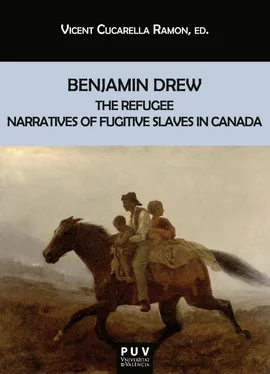

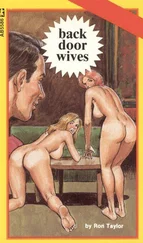

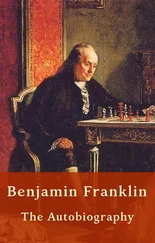
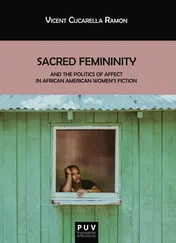


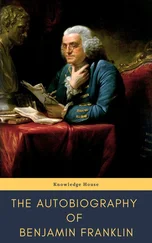


![Benjamin Franklin - Memoirs of Benjamin Franklin; Written by Himself. [Vol. 2 of 2]](/books/747975/benjamin-franklin-memoirs-of-benjamin-franklin-wr-thumb.webp)
![Benjamin Franklin - Memoirs of Benjamin Franklin; Written by Himself. [Vol. 1 of 2]](/books/748053/benjamin-franklin-memoirs-of-benjamin-franklin-wr-thumb.webp)